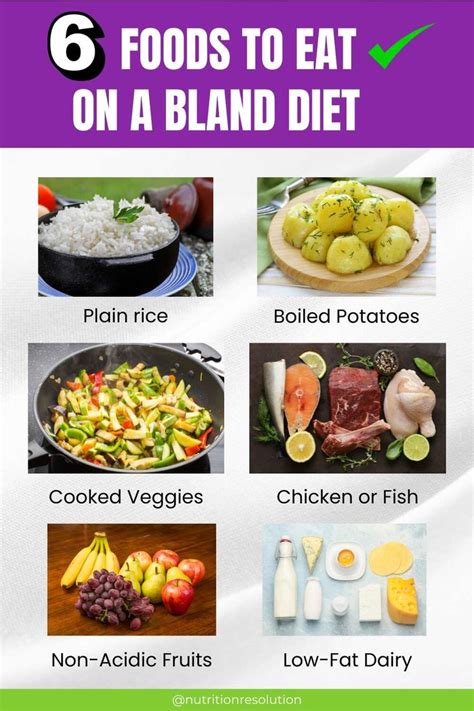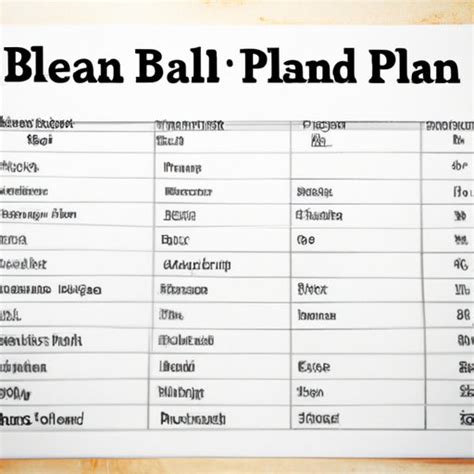Intro
Eating a bland diet can be a challenging and unappetizing experience, but it is often necessary for individuals who are recovering from certain illnesses, surgeries, or digestive issues. The goal of a bland diet is to provide the body with easily digestible foods that do not irritate the stomach or intestines. By following a bland diet, individuals can help their bodies heal and reduce the risk of complications. In this article, we will explore the importance of a bland diet and provide tips for making it more manageable.
A bland diet typically consists of foods that are low in fiber, fat, and spice. These foods are often soft, easy to chew, and gentle on the stomach. Examples of bland foods include bananas, rice, applesauce, and toast. It is essential to avoid foods that are high in acidity, such as citrus fruits and tomatoes, as well as foods that are spicy or fatty. By sticking to a bland diet, individuals can help their bodies recover from illness or surgery and reduce the risk of digestive complications.
For individuals who are new to a bland diet, it can be helpful to start by introducing small amounts of bland foods into their diet. This can help the body adjust to the new foods and reduce the risk of digestive upset. It is also essential to stay hydrated by drinking plenty of water and other fluids. By following these tips and working with a healthcare provider, individuals can make a bland diet more manageable and increase their chances of a successful recovery.
Understanding the Bland Diet

Benefits of the Bland Diet
The bland diet has several benefits, including reducing the risk of digestive complications, promoting healing, and improving overall health. By eating foods that are easy to digest, individuals can help their bodies recover from illness or surgery and reduce the risk of complications. The bland diet can also help to promote healing by providing the body with the nutrients it needs to recover. Additionally, the bland diet can help to improve overall health by reducing the risk of digestive issues and promoting a healthy digestive system.Food Options for a Bland Diet

Sample Meal Plan
Here is a sample meal plan for a bland diet: * Breakfast: oatmeal with banana and honey * Lunch: plain rice with applesauce and toast * Snack: plain crackers with gelatin * Dinner: plain chicken with mashed potatoes and green beans This meal plan provides a variety of bland foods that are easy to digest and gentle on the stomach. It is essential to work with a healthcare provider to develop a personalized meal plan that meets individual needs and promotes healing.Tips for Following a Bland Diet

Common Mistakes to Avoid
When following a bland diet, there are several common mistakes to avoid. Here are some common mistakes to avoid: * Eating foods that are high in acidity or spice * Not staying hydrated * Not working with a healthcare provider to develop a personalized meal plan * Not introducing bland foods slowly into your diet By avoiding these common mistakes, individuals can help their bodies recover from illness or surgery and reduce the risk of complications.Managing Digestive Issues on a Bland Diet

Seeking Support
Following a bland diet can be challenging, and it is essential to seek support from healthcare providers, family, and friends. Here are some ways to seek support: * Work with a healthcare provider to develop a personalized meal plan that meets your individual needs * Join a support group for individuals who are following a bland diet * Talk to family and friends about your dietary needs and ask for their support By seeking support, individuals can help make a bland diet more manageable and increase their chances of a successful recovery.Conclusion and Next Steps

Final Thoughts
In final thoughts, following a bland diet requires patience, discipline, and support. By staying committed to the diet and seeking support from healthcare providers, family, and friends, individuals can help their bodies recover and reduce the risk of complications. Remember to stay hydrated, introduce bland foods slowly, and avoid foods that are high in acidity or spice. With time and practice, following a bland diet can become more manageable, and individuals can increase their chances of a successful recovery.What is a bland diet?
+A bland diet is a type of diet that is often prescribed by healthcare providers for individuals who are recovering from certain illnesses, surgeries, or digestive issues. The diet is designed to provide the body with easily digestible foods that do not irritate the stomach or intestines.
What are some examples of bland foods?
+Some examples of bland foods include bananas, rice, applesauce, and toast. These foods are often soft, easy to chew, and gentle on the stomach.
How long do I need to follow a bland diet?
+The length of time that you need to follow a bland diet will depend on your individual needs and the advice of your healthcare provider. In some cases, a bland diet may be necessary for several weeks or months.
We hope that this article has provided you with helpful information and tips for following a bland diet. If you have any questions or comments, please don't hesitate to reach out. Share this article with others who may be following a bland diet, and consider joining a support group for individuals who are recovering from illness or surgery. Remember to stay committed to your diet and seek support from healthcare providers, family, and friends. With time and practice, following a bland diet can become more manageable, and you can increase your chances of a successful recovery.
